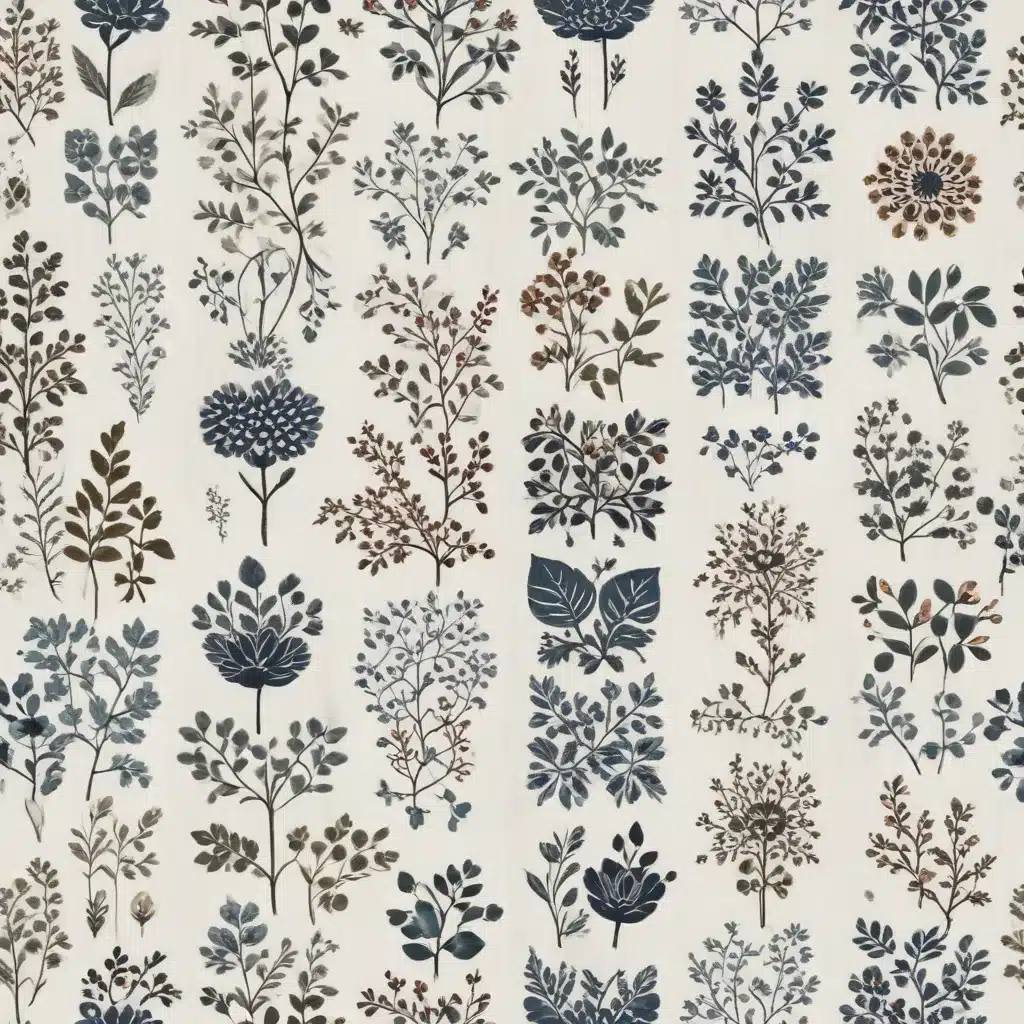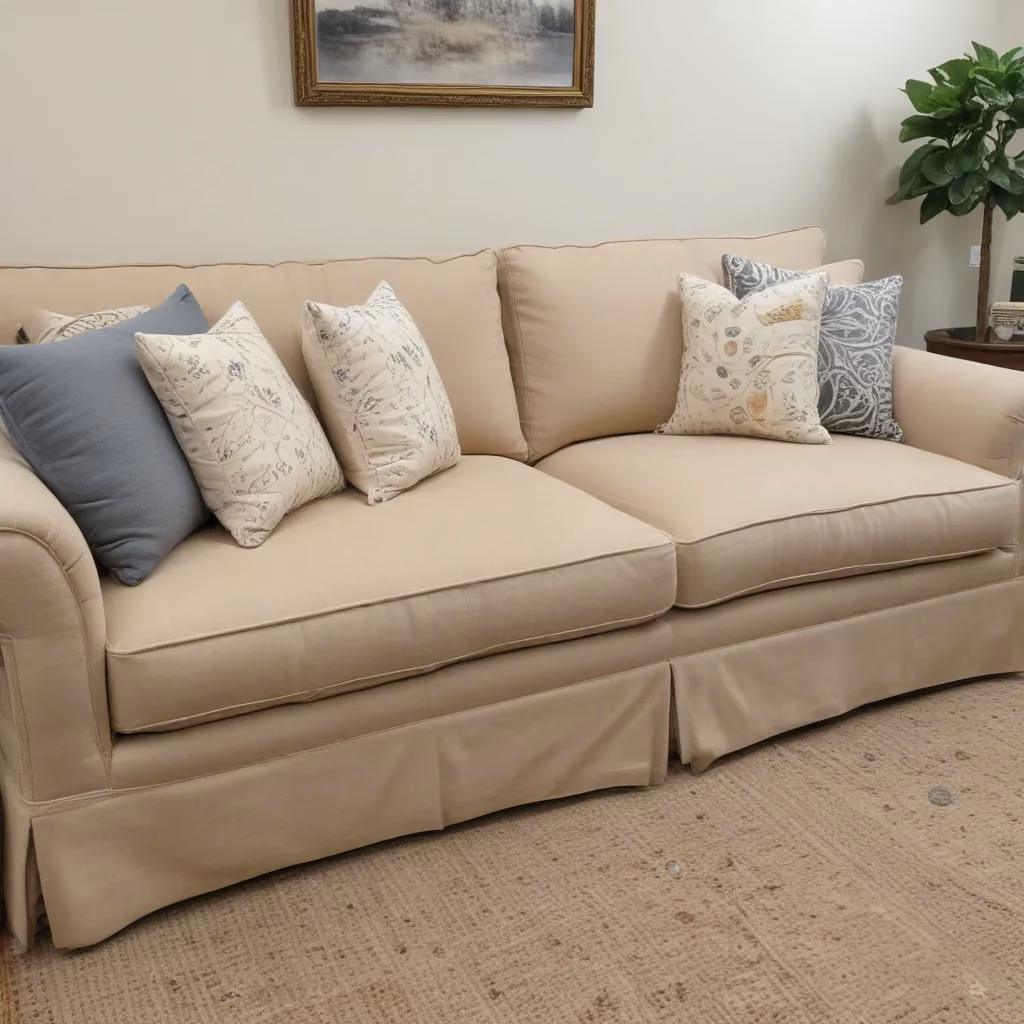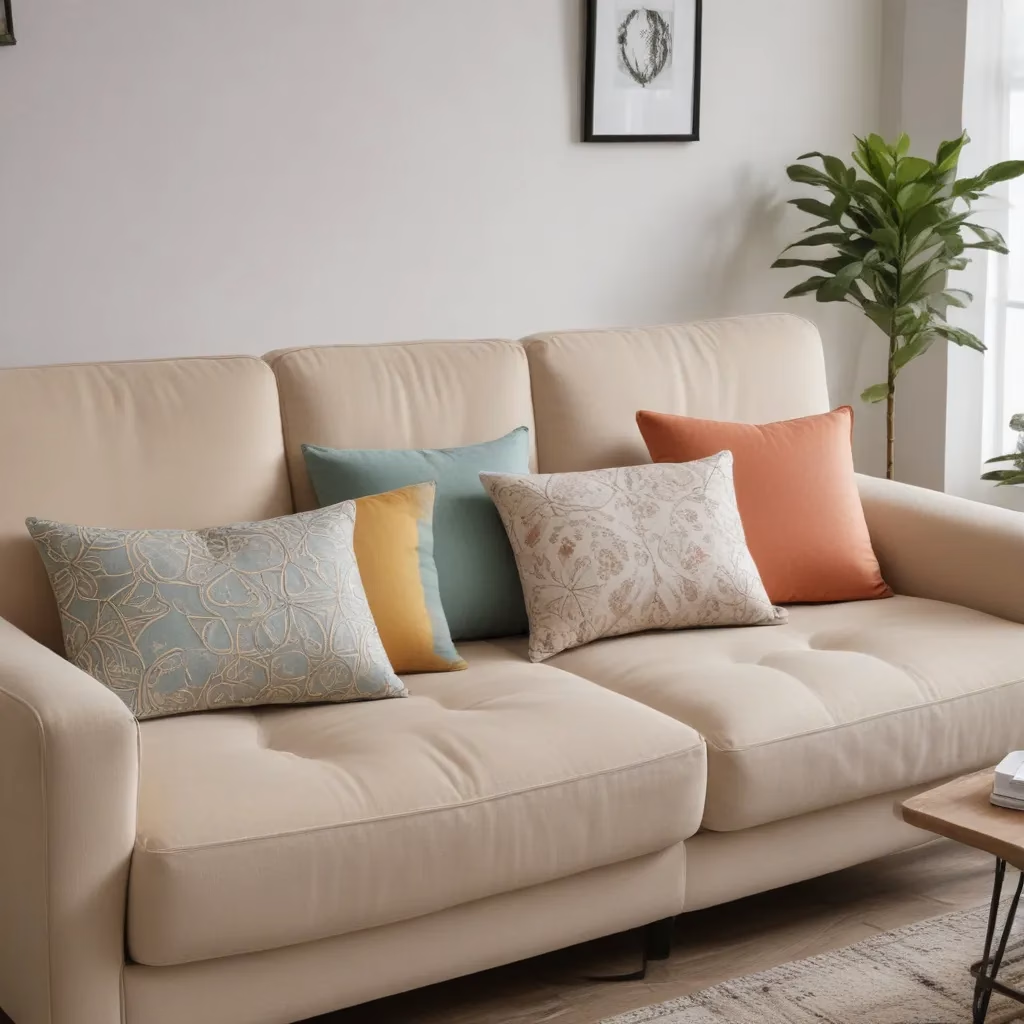
The Essence of Scandinavian Design in UK Homes
Scandinavian design has become increasingly popular in UK homes, known for its clean lines, functional beauty, and simple motifs. This aesthetic, which originated in Nordic countries, has found a welcoming audience among British homeowners who appreciate its minimalist approach and focus on comfort.
The core principles of Scandinavian design include simplicity, functionality, and connection to nature. In the context of UK interiors, this translates to light-filled spaces, natural materials, and a neutral colour palette with occasional pops of muted colours. Furniture pieces, especially sofas, play a crucial role in achieving this look.
When incorporating Scandinavian style into UK homes, it’s important to consider the local climate and lifestyle. While Scandinavian countries experience long, dark winters, the UK has its own unique weather patterns. This means adapting the style to suit British needs, such as choosing fabrics that can withstand the damp climate and creating cosy nooks for rainy days.
Choosing the Right Sofa for a Scandinavian-Inspired Living Room
The sofa is often the centrepiece of a living room, and in Scandinavian design, it’s no different. However, the approach to selecting a sofa aligns with the overall philosophy of the style. When shopping for a sofa that fits the Scandinavian aesthetic, consider the following factors:
-
Form follows function: Look for sofas that are comfortable and practical, not just visually appealing. A well-designed Scandinavian sofa should invite relaxation while maintaining a sleek profile.
-
Clean lines: Opt for sofas with straight, simple lines rather than ornate or overstuffed designs. This doesn’t mean sacrificing comfort – many modern sofas combine streamlined looks with plush seating.
-
Natural materials: Choose sofas upholstered in natural fabrics like wool, linen, or leather. These materials not only look authentic but also age beautifully, developing character over time.
To help you make an informed decision, here’s a comparison of common sofa materials used in Scandinavian-inspired designs:
| Material | Durability | Comfort | Maintenance | Aesthetic |
|---|---|---|---|---|
| Wool | High | Good | Moderate | Textured |
| Linen | Moderate | Good | High | Light, airy |
| Leather | High | Excellent | Low | Luxurious |
| Cotton | Moderate | Good | Moderate | Versatile |
When selecting a sofa for your Scandinavian-inspired living room, balance these factors with your personal needs and the specific requirements of your space. Remember, the goal is to create a harmonious environment that is both beautiful and functional.
Incorporating Simple Motifs in Your Sofa Design
One of the hallmarks of Scandinavian design is the use of simple motifs. These can be subtle patterns or textures that add interest without overwhelming the space. When it comes to sofas, this can be achieved through:
-
Textured fabrics: Look for sofas with fabrics that have a subtle weave or pattern. This adds depth to the piece without compromising the overall simplicity of the design.
-
Geometric patterns: Small, repeating geometric patterns on throw pillows or in the upholstery itself can add a touch of visual interest while maintaining the clean aesthetic.
-
Natural elements: Wooden legs or armrests can introduce an organic element to the sofa, tying it into the nature-inspired aspect of Scandinavian design.
When incorporating these motifs, remember that less is more. The beauty of Scandinavian design lies in its restraint, so choose one or two elements to focus on rather than combining multiple patterns or textures.
Colour Choices for Scandinavian-Inspired Sofas
The colour palette in Scandinavian design is typically neutral, with an emphasis on light hues that help brighten spaces and create an airy atmosphere. When choosing a sofa colour, consider the following options:
-
White or off-white: These colours are classic choices for Scandinavian interiors, creating a bright and open feel. However, they may require more maintenance in high-traffic areas.
-
Light grey: A versatile option that adds warmth while maintaining the light, airy aesthetic of Scandinavian design.
-
Pale blue or green: These colours can introduce a subtle connection to nature without overpowering the space.
-
Natural tones: Beige, taupe, or light brown can add warmth and complement wooden elements in the room.
While neutral colours dominate, don’t be afraid to introduce a pop of colour through accessories like throw pillows or blankets. Muted versions of primary colours or pastels can add visual interest without compromising the overall aesthetic.
Complementing Your Sofa with Scandinavian-Inspired Accessories
To create a cohesive Scandinavian-inspired living room, it’s important to consider how your sofa interacts with other elements in the space. Here are some tips for accessorising your sofa:
-
Throw pillows: Choose pillows in complementary neutral tones or with simple geometric patterns. Limit the number to avoid clutter.
-
Blankets: Drape a cosy wool or cotton blanket over the arm or back of the sofa. This not only adds texture but also provides warmth for chilly evenings.
-
Side tables: Opt for simple, wooden side tables with clean lines to complement your sofa.
-
Lighting: Floor lamps with sleek designs can provide both functional light and a design element that complements your sofa.
-
Rugs: A simple, neutral rug can help define the seating area and add warmth to the space.
Remember, the key is to maintain a balanced and uncluttered look. Each accessory should serve a purpose, whether functional or aesthetic, without overwhelming the simplicity of the overall design.
Maintaining Your Scandinavian-Inspired Sofa
To keep your sofa looking its best and in line with the clean aesthetic of Scandinavian design, regular maintenance is key. Here are some tips:
-
Vacuum regularly: Use a soft brush attachment to remove dust and debris from the fabric or leather.
-
Spot clean promptly: Address spills immediately to prevent staining. Use appropriate cleaners for the specific material of your sofa.
-
Rotate cushions: If possible, rotate and flip cushions regularly to ensure even wear.
-
Protect from sunlight: While Scandinavian design emphasises natural light, direct sunlight can fade fabrics. Use sheer curtains to filter harsh rays.
-
Professional cleaning: Consider professional cleaning once or twice a year, depending on usage, to keep your sofa in top condition.
By following these maintenance tips, you can ensure that your Scandinavian-inspired sofa remains a beautiful and functional centrepiece in your living room for years to come.
Creating a Cohesive Look: Scandinavian Design Beyond the Sofa
While the sofa is a key element in your Scandinavian-inspired living room, it’s important to consider how it fits into the broader context of your space. Here are some tips for creating a cohesive look:
-
Keep it light: Scandinavian design emphasises light, both natural and artificial. Consider installing large windows or skylights if possible, and use light-coloured walls to reflect light throughout the space.
-
Incorporate natural elements: In addition to your sofa, bring in other natural materials like wood, stone, or plants to create a connection with nature.
-
Minimise clutter: Embrace the “less is more” philosophy by carefully curating your possessions and investing in smart storage solutions.
-
Balance textures: While maintaining simplicity, incorporate a variety of textures through rugs, curtains, and other textiles to add depth to the space.
-
Choose functional decor: Every item in a Scandinavian-inspired room should serve a purpose. Select decor pieces that are both beautiful and functional.
By considering these elements, you can create a harmonious living space that embodies the principles of Scandinavian design while reflecting your personal style and needs.
The Role of Comfort in Scandinavian Sofa Design
While aesthetics are important in Scandinavian design, comfort is equally valued. The ideal Scandinavian-inspired sofa should be inviting and cosy, encouraging relaxation and social interaction. Here’s how comfort is integrated into Scandinavian sofa design:
-
Ergonomic considerations: Many Scandinavian sofas are designed with ergonomics in mind, providing proper support for the back and encouraging good posture.
-
Plush cushioning: Despite their sleek appearance, well-designed Scandinavian sofas often feature high-quality, comfortable cushioning.
-
Modular designs: Some Scandinavian sofas come in modular designs, allowing you to customise the configuration to best suit your space and comfort needs.
-
Multifunctionality: In keeping with the practical aspect of Scandinavian design, many sofas include features like built-in storage or the ability to convert into a bed.
When selecting a sofa, it’s important to test it out in person whenever possible. Sit on it, lie down, and ensure that it provides the level of comfort you desire for your daily life.
Sustainability in Scandinavian Sofa Design
Sustainability is a growing concern in the UK furniture market, and it aligns well with the principles of Scandinavian design. When shopping for a Scandinavian-inspired sofa, consider these eco-friendly aspects:
-
Sustainable materials: Look for sofas made from sustainably sourced wood, organic fabrics, or recycled materials.
-
Longevity: Choose a well-made sofa designed to last for many years, reducing the need for frequent replacements.
-
Local production: Consider sofas made in the UK or Europe to reduce transportation emissions.
-
Non-toxic finishes: Opt for sofas with non-toxic, low-VOC finishes to maintain good indoor air quality.
-
End-of-life considerations: Some manufacturers offer take-back programmes or provide information on how to responsibly dispose of or recycle the sofa at the end of its life.
By considering these factors, you can choose a sofa that not only looks great and feels comfortable but also aligns with environmentally conscious values.
Adapting Scandinavian Style to UK Homes
While Scandinavian design has gained popularity in the UK, it’s important to adapt the style to suit British homes and lifestyles. Here are some ways to make Scandinavian design work in a UK context:
-
Colour palette: While Scandinavian design often favours very light colours, you might opt for slightly warmer tones to create a cosy atmosphere in the often-grey UK climate.
-
Lighting solutions: Given the UK’s shorter winter days, incorporate a variety of lighting options to create a bright, welcoming space year-round.
-
Weather-appropriate fabrics: Choose sofa upholstery that can withstand the UK’s damp climate and temperature fluctuations.
-
Scale considerations: UK homes often have smaller rooms than their Scandinavian counterparts. Look for sofas and furniture that are proportionate to your space.
-
Cultural integration: Blend Scandinavian design principles with elements of British style for a unique, personalised look.
By thoughtfully adapting Scandinavian design principles to your UK home, you can create a space that is both stylish and suited to your specific needs and environment.
Where to Find Scandinavian-Inspired Sofas in the UK
For those looking to incorporate Scandinavian style into their homes, there are numerous options available in the UK market. While we won’t mention specific brands, here are some general places to look:
-
Home decor websites: Many online retailers specialise in Scandinavian-inspired furniture, offering a wide range of sofa options.
-
Department stores: Larger department stores often have furniture sections that include Scandinavian-style pieces.
-
Speciality furniture shops: Some brick-and-mortar stores focus specifically on Scandinavian or Nordic design.
-
Custom furniture makers: For a unique piece, consider working with a custom furniture maker who can create a Scandinavian-inspired sofa to your specifications.
-
Second-hand and vintage shops: You might find authentic vintage Scandinavian pieces or items that fit the aesthetic in second-hand stores.
When shopping for your Scandinavian-inspired sofa, don’t forget to check out https://sofaspectacular.co.uk/ for a range of options that might suit your style and needs.
Conclusion: Embracing Scandinavian Simplicity in Your Living Room
Incorporating Scandinavian design into your UK home, particularly through your choice of sofa, can create a space that is both beautiful and functional. By focusing on simple motifs, clean lines, and a neutral colour palette, you can achieve a look that is timeless and versatile.
Remember that the key to successful Scandinavian-inspired design is balance. Strive for a mix of comfort and style, natural and man-made materials, and light and dark elements. Don’t be afraid to adapt the principles of Scandinavian design to suit your personal taste and the unique characteristics of your home.
Ultimately, your living room should be a reflection of your lifestyle and values. Whether you fully embrace Scandinavian minimalism or simply incorporate elements of the style, the goal is to create a space that feels welcoming, comfortable, and authentically you.
By carefully selecting a sofa that embodies Scandinavian design principles and complementing it with thoughtfully chosen accessories and decor, you can transform your living room into a serene and inviting space that you’ll enjoy for years to come.



